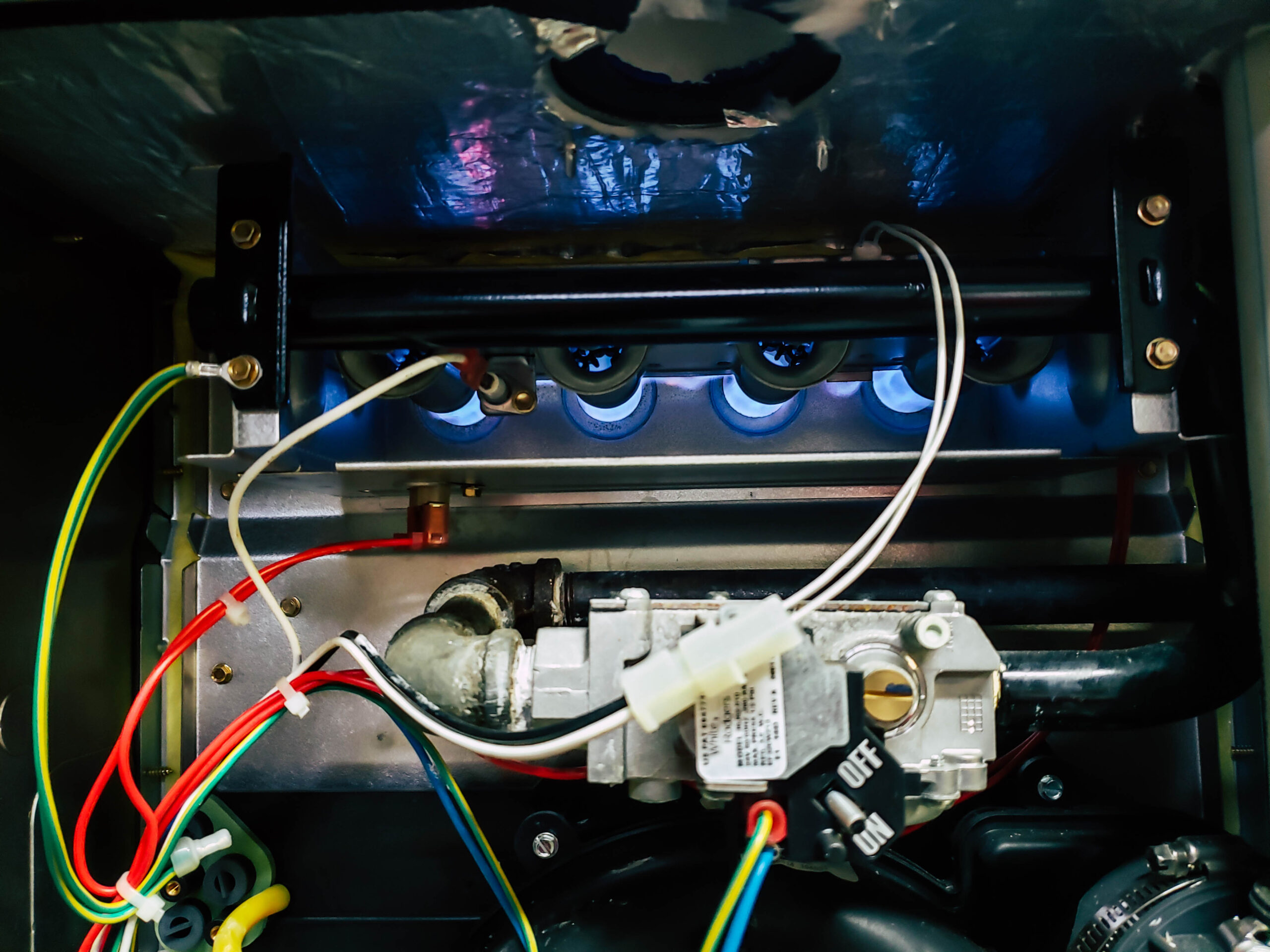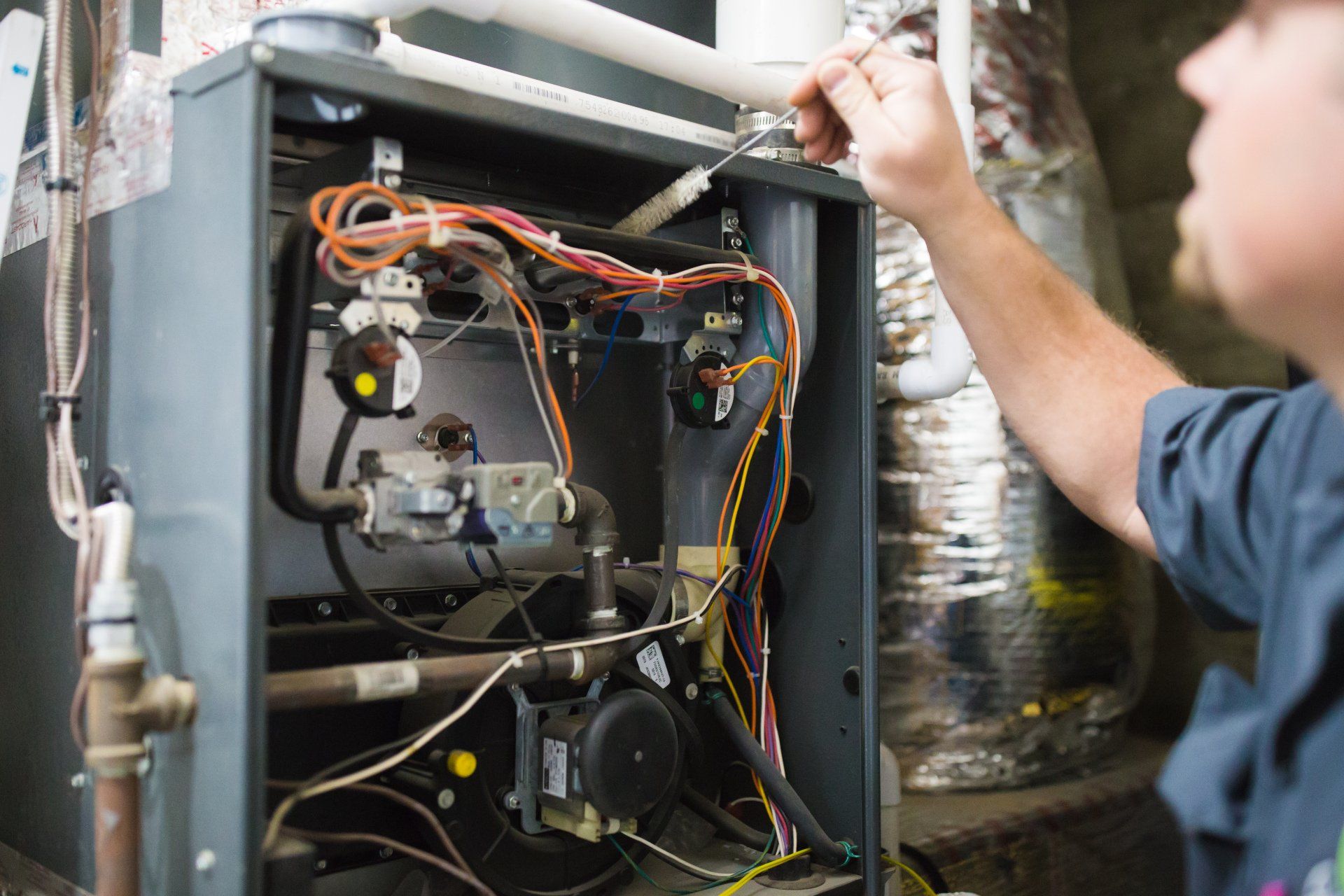How To Know If Pilot Light Is Out On Furnace

Frequently Asked Questions: Is My Furnace Pilot Light Out?
Many older furnaces rely on a pilot light, a small, continuous flame that ignites the main burner to provide heat. If the pilot light goes out, your furnace won't work. Here are some common questions to help you determine if this is the problem and what to do about it.
Question 1: What exactly is a pilot light and where do I find it on my furnace?
The pilot light is a small, steady flame that burns constantly in older gas furnaces. It provides the initial ignition source for the main burners when the thermostat calls for heat. Think of it like a little match that's always lit, ready to light the bigger fire.
To find it, look for a small access panel, often located near the bottom of your furnace. It's usually near the gas valve and burner assembly. You might see labels like "Pilot," "Igniter," or instructions for relighting. Some furnaces have a small viewing window to see the pilot flame directly. Always turn off the furnace before opening any access panels. Refer to your furnace’s user manual for specific location and safety precautions.
Safety Note: If you smell a strong odor of gas, do not attempt to locate or relight the pilot light. Immediately evacuate the area, and contact your local gas company from a safe location.
Question 2: What are the common signs that my furnace pilot light is out?
Here are the most common indicators that your furnace pilot light has gone out:
- No Heat: This is the most obvious sign. If your thermostat is set to heat, and you're not getting any warm air, a pilot light issue is a strong possibility.
- Cold Air Blowing: Your furnace fan may still be running, circulating cold air instead of warm air.
- Furnace Won't Turn On: The furnace may simply not respond when you turn up the thermostat.
- Visible Absence of Flame: If you have a viewing window or have safely opened the access panel (after turning off the furnace), you'll see that the pilot light flame is missing. It should be a small, steady blue flame.
- Gas Smell (Faint): Sometimes, a faint smell of gas can indicate that the pilot light is out, as unburned gas is being released. If the smell is strong, prioritize safety and evacuate.
- Error Codes: Some newer furnaces, even those with pilot lights, may display error codes indicating a pilot light failure. Consult your furnace manual.
Important: Don't confuse a pilot light issue with a general furnace malfunction. Check your air filter first, as a clogged filter can prevent the furnace from working properly.
Question 3: What are the most frequent reasons why a pilot light goes out?
Several factors can cause a pilot light to extinguish. Here are some of the most common:
- Drafts: Strong drafts can blow out the pilot light, especially in older furnaces or those located in exposed areas.
- Gas Supply Issues: A problem with the gas supply, such as a shut-off valve accidentally closed or a disruption in gas service, will extinguish the pilot light.
- Dirty Pilot Light Assembly: Dust, debris, or corrosion can accumulate around the pilot light assembly, disrupting the gas flow and causing the flame to go out.
- Faulty Thermocouple: The thermocouple is a safety device that senses the pilot light flame. If the flame is present, the thermocouple allows gas to flow to the main burner. If the thermocouple is faulty, it will shut off the gas supply to the pilot light, even if the flame is burning.
- Weak Gas Pressure: Low gas pressure can cause the pilot light flame to be too weak to stay lit. This could be due to issues with the gas regulator or problems elsewhere in your gas line.
- Spider Webs or Insect Nests: Insects, especially spiders, love to build webs in small spaces like the pilot light orifice. These webs can block the gas flow.
Question 4: How do I relight the pilot light on my furnace safely?
Warning: If you smell a strong odor of gas, do not attempt to relight the pilot light. Evacuate the area and contact your local gas company from a safe location.
If you are confident that there is no significant gas leak, you can attempt to relight the pilot light. Here's a general procedure, but always refer to your furnace's user manual for specific instructions:
- Turn Off the Furnace: Locate the gas valve for your furnace and turn it to the "OFF" position. This is usually a lever or dial. Wait at least five minutes to allow any accumulated gas to dissipate.
- Locate the Pilot Light Assembly: Find the access panel near the bottom of your furnace where the pilot light is located.
- Identify the Pilot Light Controls: You'll typically see three positions: "ON," "OFF," and "PILOT." Turn the control knob to the "PILOT" position.
- Press and Hold the Reset Button: While in the "PILOT" position, press and hold the reset button. This button allows gas to flow to the pilot light.
- Light the Pilot Light: While holding the reset button, use a long-stemmed lighter or match to ignite the pilot light. The flame should be small and steady.
- Hold the Reset Button: Continue holding the reset button for about 30-60 seconds after the pilot light ignites. This allows the thermocouple to heat up.
- Release the Reset Button: Slowly release the reset button. If the pilot light stays lit, you've successfully relit it. If the pilot light goes out, repeat steps 4-6. If it still won't stay lit, there may be a problem with the thermocouple or another component.
- Turn to "ON": Once the pilot light stays lit, turn the gas valve to the "ON" position.
- Turn on the Furnace: Restore power to the furnace and set your thermostat to a temperature above the current room temperature. The main burner should ignite, and you should feel warm air coming from the vents.
If you are uncomfortable with any of these steps, contact a qualified HVAC technician.
Question 5: What is a thermocouple, and how do I know if it's faulty?
The thermocouple is a safety device that ensures the gas valve stays open only when the pilot light is lit. It's a small, copper rod that sits in the pilot light flame. When heated, it generates a small electrical current. This current signals to the gas valve that the pilot light is burning, allowing gas to flow. If the pilot light goes out, the thermocouple cools, the electrical current stops, and the gas valve shuts off, preventing a gas leak.
Here's how to tell if your thermocouple might be faulty:
- Pilot Light Won't Stay Lit After Relighting: If you can relight the pilot light, but it goes out as soon as you release the reset button, the thermocouple is the most likely culprit.
- Visible Damage: Inspect the thermocouple for any signs of damage, such as cracks, corrosion, or kinks.
- Testing with a Multimeter: A qualified HVAC technician can use a multimeter to test the thermocouple's output voltage. A low or zero voltage reading indicates a faulty thermocouple. Do not attempt this yourself unless you are experienced with electrical testing.
Replacing a thermocouple is a relatively inexpensive and straightforward repair, but it's best left to a qualified technician unless you have experience with gas appliance repair. Improper installation can create a dangerous gas leak.
Question 6: Can I prevent my pilot light from going out in the future?
While you can't guarantee your pilot light will never go out, here are some steps you can take to minimize the chances:
- Regular Furnace Maintenance: Schedule annual furnace maintenance with a qualified HVAC technician. This includes cleaning the pilot light assembly, inspecting the thermocouple, and checking the gas pressure.
- Keep the Area Around the Furnace Clean: Dust and debris can accumulate around the pilot light assembly, so keep the area clean. Vacuum regularly.
- Protect from Drafts: If your furnace is located in a drafty area, try to block the drafts with weather stripping or other barriers.
- Ensure Proper Ventilation: Make sure your furnace has adequate ventilation to prevent carbon monoxide buildup.
- Check Gas Line for Leaks: Periodically check your gas lines for leaks using a soapy water solution. If you see bubbles forming, there's a leak. Contact your gas company immediately.
Question 7: When should I call a professional instead of trying to fix it myself?
It's best to call a qualified HVAC technician in the following situations:
- You Smell a Strong Odor of Gas: Evacuate immediately and call your gas company.
- You Are Uncomfortable Relighting the Pilot Light: If you're not confident in your ability to relight the pilot light safely, it's best to leave it to a professional.
- The Pilot Light Won't Stay Lit After Multiple Attempts: This likely indicates a more serious problem, such as a faulty thermocouple or gas valve.
- You Suspect a Gas Leak: Any suspicion of a gas leak should be taken seriously.
- You Don't Have the Proper Tools or Expertise: Trying to repair a gas appliance without the proper tools and knowledge can be dangerous.
- The Furnace Has Other Issues: If your furnace is making strange noises, producing unusual smells, or exhibiting other problems, it's best to have it inspected by a professional.
Safety should always be your top priority. When in doubt, call a qualified HVAC technician to diagnose and repair your furnace.










